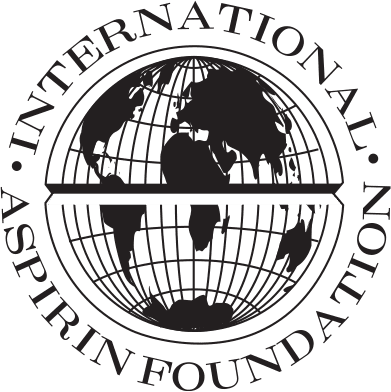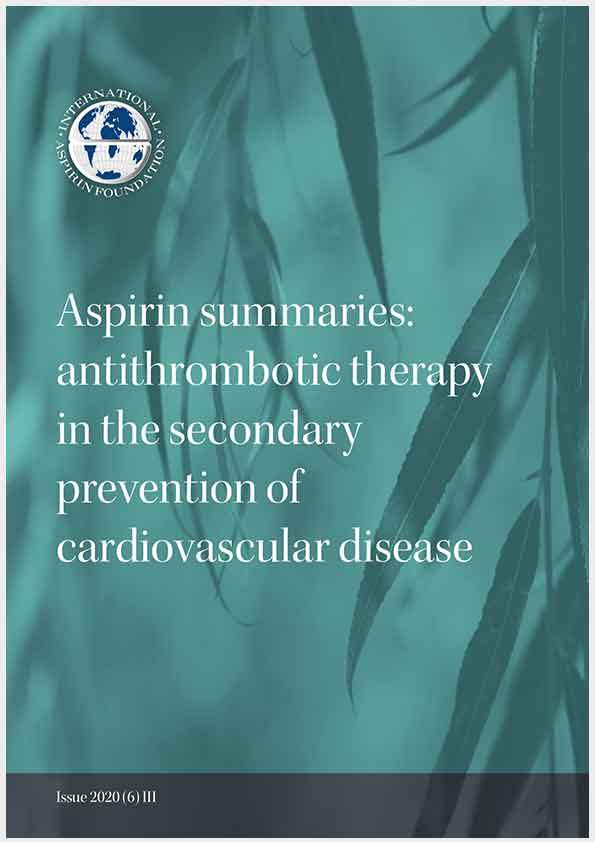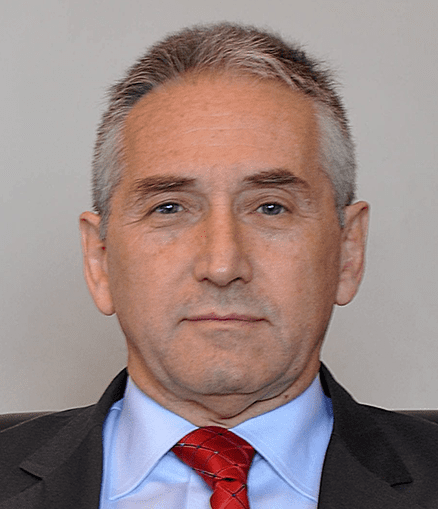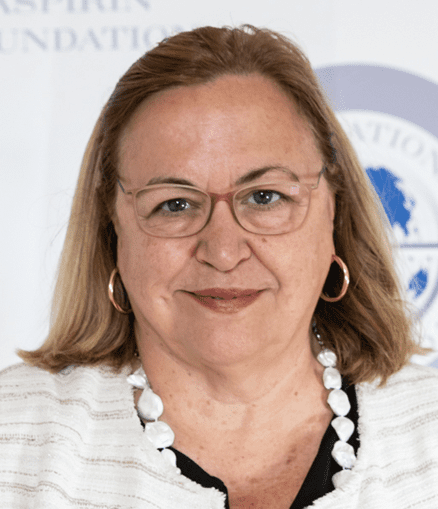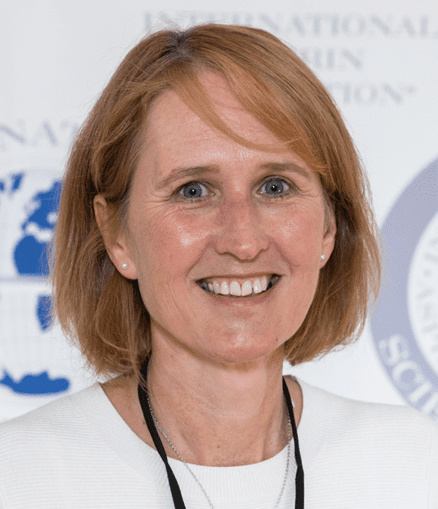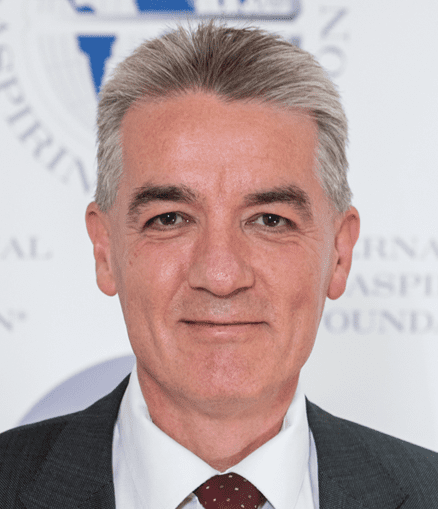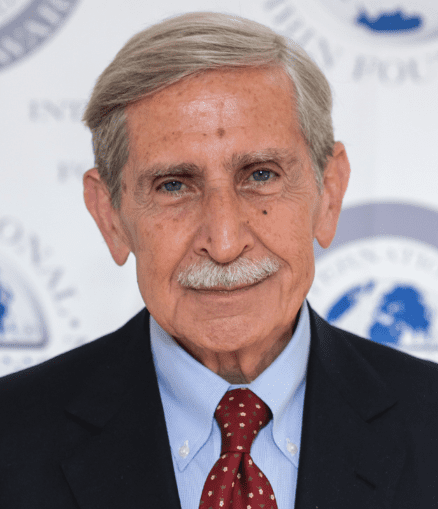Antithrombotic therapy in the secondary prevention of cariovascular disease
Anticoagulant and antiplatelet regimens for secondary prevention in people with a high risk of a further cardiovascular disease (CVD) events.
People with coronary artery disease (CAD) and atrial fibrillation (AF) require powerful antithrombotic regimens to prevent further CVD events. The challenge however is to construct combination therapies with maximal benefit and minimal risk of side effects such as bleeding and to individualise treatment regimens to match patients risk to benefit characteristics. People with, for example, multi vessel CAD but no risk factors for bleeding side effects may benefit most from intensive combination regimens.
The summaries below look at some recent studies designed to shed further light on the risk benefit equation.
Two year global study investigates clinical outcomes in people with newly diagnosed atrial fibrillation and a history of acute coronary syndrome (GARFIELD- AF study).
Within the 39,679 patients enrolled into the GARFIELD-AF study, between March 2010 and September 2015, 10.5% were found to have a history of acute coronary syndrome (ACS). This global registry study found that the people with
both AF and prior history of ACS were less likely to receive oral anticoagulants (OAC) to manage their AF, they were more often treated with antiplatelet therapy alone and had worse long term clinical outcomes when compared with AF patients without a prior history of ACS. These poorer clinical outcomes included a higher incidence of stroke/systemic embolism, recurrent ACS, major bleeding and a higher mortality rate.
The authors conclude:
“In GARFIELD-AF, previous acute coronary syndromes are associated with worse 2-year outcomes and a greater likelihood of under-treatment with OAC, while two-thirds of patients receive AP [antiplatelet] therapy. Major bleeding was more common with previous acute coronary syndromes, even after adjusting for all risk factors.”
For further information please see:
Verheugt FWA, Ambrosio G, Atar D et al. Outcomes in Newly Diagnosed Atrial Fibrillation and History of Acute Coronary Syndromes: Insights from GARFIELD-AF. The American Journal of Medicine (2019) 132:1431-1440.
Antithrombotic therapy for people with atrial fibrillation (AF) and stable coronary artery disease (CAD); the AFIRE trial.
This multicentre, open-label trial from Japan studied 2236 patients with AF and stable coronary disease (defined as percutaneous coronary intervention [PCI] or coronary-artery bypass grafting [CABG] over a year ago or CAD confirmed by angiography that doesn’t requiring revascularization). The idea behind the trial is that antithrombotic therapy for people with both AF and CAD can be less intensive than simply combining the regimens required for each condition separately.
In their literature search the authors identify that approximately 5-7% of people with CAD requiring PCI also have a long term indication for oral anticoagulant treatment.
The trial, which was stopped early due to an increased mortality in the combination therapy arm, showed that monotherapy with the NOAC (novel oral anticoagulant) rivaroxaban, was noninferior to combination therapy (rivaroxaban plus a single antiplatelet agent) in terms of primary efficacy endpoints (a composite of stroke, systemic embolism, MI, unstable angina requiring revascularization or death from any cause). Event rates of 4.14% per year in the monotherapy group versus 5.75% per year in the combination group were reported (hazard ration, 0.72; 95% confidence interval, 0.55 to 0.95; P<0.001 for noninferiority). When it came to safety measures NOAC monotherapy was found to be superior to the NOAC plus antiplatelet combination with major bleeding event rates of 1.62% and 2.76% per patient year respectively (hazard ratio, 0.59; 95% CI, 0.39 to 0.89; P=0.01 for superiority).
This AFIRE (Atrial Fibrillation and Ischemic Events with Rivaroxaban in patients with Stable Coronary Artery Disease) trial completed its planned enrolment and therefore had the statistical power to effectively examine the use of NOAC monotherapy in this patient population. NOACs have several advantages over tradition warfarin (vitamin K antagonist oral anticoagulant) therapy;
they have a predictable effect, more favourable safety profile in terms of intracranial haemorrhage and death, do not require regular monitoring as well as having a lower risk of food or drug interactions.
The limitations of AFIRE include its open-label design with the potential for bias and a relatively
high dropout rate and loss of follow up (although this was within a predicted 5% discontinuation rate and was consistent between the two study groups). It is also unknown if the data from this trial reflects other populations and the dosing of rivaroxaban (10-15 mg once daily) in Japan is lower than the globally licensed dose of 20 mg daily. In addition, the treating clinician could choose to use either a P2Y12 inhibitor or aspirin which means the study cannot tell us if the benefit of the NOAC monotherapy can be applied equally to either antiplatelet regimen. The fact that the trial was terminated early may lead to an overestimation of the efficacy data available.
The reductions in ischemic events and death from any cause in the monotherapy rivaroxaban arm are hard to explain from a biological perspective and the authors suggest that this could be a chance finding.
The authors conclude that as antithrombotic therapy in this population:
“Rivaroxaban monotherapy was noninferior to combination therapy with rivaroxaban plus antiplatelet therapy with respect to cardiovascular events and death from any cause and superior with respect to major bleeding.”
Yasuda et al 2019
For further information please see:
Yasuda S, Kaikita K, Akao M et al AFIRE Investigators Antithrombotic therapy for atrial fibrillation with stable coronary disease. N Engl J Med (2019) 381(12):1103.
The quality of oral anticoagulation using vitamin K antagonists in ‘real world’ patients with atrial fibrillation – this study from 2018 revealed how real-world data showed the need for better anticoagulant control in people with atrial fibrillation taking oral vitamin K antagonists.
The time in therapeutic range (TTR) is a key measure of efficacy and safety for vitamin K antagonists (VKA) used for oral anticoagulation (OAC). A multicentre, prospective, Spanish observational registry FANTASIIA reports its analysis of the quality of anticoagulation and identifies clinical determinants of this control.
The FANTASIIA registry included 2178 patients of which 1648 were treated with VKAs and 530 with a NOAC (novel oral anticoagulant). One year of follow- up was completed for 1938 (89%) of the patients of which 1470 patients were on a VKA and 468 were taking a NOAC.
The study found that 55% of patients with atrial fibrillation (AF) using VKA for OAC experienced poor anticoagulation control. In addition diabetes mellitus (DM), peripheral artery disease (PAD) and HAS-BLED score were all independently linked to a TTR of less than 70% suggesting poor anticoagulant control. The researchers also found that the scoring system SAMe- TT2R2 (sex female, age <60 years, medical history [more than two co-morbidities], treatment [interacting drugs] tobacco use [doubled]) was highly specific for predicting a TTR of < 70% and thus poor anticoagulant control. It is thought that where TTR is high VKAs may be as efficacious as non-VKA oral anticoagulants (NOACs) which will be attractive to some healthcare systems due to lower cost.
For further information please see:
Esteve-Pastor AM, Rivera-Caravaca JM, Roldán-Rabadán I, Roldán V, Muῆiz J, Rana-Míguez P, Ruiz-Ortiz M, Cequier Ά, Bertomeu-Martínez V, Badimón L, Anguita M, Lip GYH and Marín F on behalf of FANTASIIA Investigators. Quality of oral anticoagulation with vitamin K antagonist in ‘real world’ patients with atrial fibrillation: a report from the prospective multicentre FANTASIIA registry. Europace (2018) 20, 1435-1441.
Female sex as predictor of worse outcomes following ST-segment- elevation myocardial infarction (STEMI).
This paper describes how atherosclerosis affects men and women in different ways and identifies sex as an important biological variable for research design. The paper cites evidence to show that women presenting with ST-segment-elevation myocardial infarction (STEMI) are more likely to die than men. The researchers investigate whether post-PCI coronary blood flow differs between men and women and if this may partially explain the increased 30-day mortality rate in women. They also investigated the impact of a delay in presenting to hospital on this effect.
The data used in this investigation comes from patients within the ISACS-TC (International Survey of Acute Coronary Syndromes in Transitional Countries) registry; a large, prospective, multicentre cohort used to record clinical characteristics, treatments and outcomes for people experiencing ACS. A study population of 2596 patients were used in this analysis of which 1923 (74.1%) were men and 673 (25.9%) were women.
This study found that women had lower PCI success rates (assessed by post PCI-TIMI [thrombolysis in myocardial infarction] flow rate grade) irrespective of the time to presenting in hospital. The time to hospital presentation is associated with 30 day mortality and late STEMI presenting women have a higher mortality rate than men. Presenting early is key factor for success; if men and women present within 2 hours of symptom onset the outcome is equally positive for both sexes.
A failure to obtain favourable post PCI thrombolysis is one potentially modifiable risk factor explaining why women have a higher post procedural mortality rate. In addition, female sex differences also play a role. These include; a greater number of macrophages in the ischemic areas, smaller coronary artery size and a greater susceptibility to ischemic injury with e.g. reduced collateral flow and possibly a greater chance of complications such as shock, ventricular septal rupture and severe mitral valve regurgitation.
Targeting and reducing sub optimal post PCI blood flow rates in women maybe one way of reducing the current sex gap in mortality between the sexes.
For further information please see:
Cenko E, vander Schaar M, Yoon J, Kedev S, Valvukis M, Vasiljevic Z, Ašanin M, MiličičD, Manfrini O, Badimon L and Bugiardini R. Sex-Specific Treatment Effects After Primary Percutaneous Intervention: A Study on Coronary Blood Flow and Delay to Hospital Presentation. (2019) J Am Heart Assoc, Feb 19; 8(4):e011190. Doe: 10.1161/ JAHA.118.011190.
Extracts from the 2019 International Aspirin Foundation Scientific Conference, Rome, 2019: benefits and risks of antithrombotic therapy for cardiovascular disease prevention
Antithrombotic therapy in secondary cardiovascular disease (CVD) prevention was one of the many topics discussed during our Scientific Conference, where international experts gathered to discuss and debate ‘Combining antiplatelet and anticoagulant strategies in high-risk patients’
Below are the speaker biographies and their extract from the conference report.
- Lina Badimon (Cardiovascular Research Center, Barcelona),
The role of platelet activation and blood coagulation in atherothrombosis
- Giancarlo Agnelli (Univ of Perugia, Italy),
Clinical trials of low-dose aspirin combined with low-dose rivaroxaban
Professor Lina Badimon
Prof. Lina Badimon is the Director of the Cardiovascular Science Program (ICCC) at the IR-Hospital Santa Creu and San Pau, Director of the Cardiovascular Research Chair of the Autonomous University of Barcelona and Director of the UNESCO Chair in Biomedical Sciences Training and Research. She is the Chair of the Advocacy Committee and Board Member 2018-2020 of the European Society of Cardiology.
Her research activities focus on cardio-metabolic diseases, thrombosis, atherosclerosis and ischemic heart disease.
She has published over 560 articles in highly qualified scientific journals with her work highly quoted in the scientific literature (Citations: 41.241; h‐index 76). She has written more of 250 reviews and book chapters.
She is Member of Editorial Boards of various international scientific journals. Previous appointments include: Fellow in Cardiovascular Diseases at The Mayo Clinic, Rochester, MN, USA (1981‐1983); Director of the Cardiology Basic Research Laboratory of the Division of Cardiology at the Mount Sinai Medical Center, New York, NY (1983‐1991); Assistant Professor of Medicine (1983‐1987) and Associate Professor of Medicine (1988‐1991) at the Mount Sinai School of Medicine, NY; Lecturer in Medicine at Harvard Medical School, Boston (1991‐1994); Consultant at the Cardiac Unit, at the Massachusetts General Hospital, Boston (1991‐1994)
The role of platelet activation and blood coagulation in atherothrombosis
Prof. Lina Badimon (Cardiovascular Research Center, Barcelona, Spain) explained the science behind the role of platelet activation and blood coagulation in atherothrombosis. Prof. Badimon visually explained the mechanisms of the pathogenesis of thrombosis formation (Figure 1): Platelets released into the bloodstream by bone marrow and circulate for 7–10 days and play an important role in the maintenance of the integrity of vascular walls and in haemostasis. The disruption of an atherosclerotic plaque triggers uncontrolled platelet recruitment, thrombin production and the creation of a thrombus or a clot. In addition, platelets participate in leucocyte and progenitor cell recruitment and may mediate atherosclerosis progression. Extracellular vesicles, such as microvesicles, have a role in all stages of atherosclerotic development and may have a potential use as systemic biomarkers of thrombus growth. It is not just platelets that are involved in the formation of a thrombus; coagulation processes are key to the formation of complex thrombus, as well as white cells and other proteins, such as tissue factor (TF). Prof. Badimon explored the complexities involved in these processes and the importance of understanding what happens within the vessel wall.
Prof. Badimon put this science within the context of patients experiencing a CVD event and explained to the audience the many different parts of the pathway that can be targeted by drug treatment. The delicate balance between CVD risk reduction and bleeding adverse events was also discussed.
It is important to remember that platelets are not only involved in thrombosis; they have other actions in additional systems and/or processes such as angiogenesis, inflammation and cancer, and blocking platelets has important effects in many systems throughout the body.
Despite this detailed insight, Prof. Badimon explained that there is still a lot to learn about how these mechanisms work and interact in order to progress in our understanding of antiplatelet therapy and antithrombotics. It is also important to understand the context in which the clot formation occurs because different reactions take place in relation to different haemodynamic conditions; in a lesion within a high shear vessel, platelets will play a major role but the response is different on lesions in areas of low shear with a higher content of fibrin. Depending upon the haemodynamic conditions, an atherosclerotic lesion may trigger different thrombotic reactions and, therefore, susceptibility to different antithrombotics. The type of atherosclerotic lesion and the haemodynamis conditions are two characteristics behind inter-patient variability in response to treatment.
In the Compass trial [7, 8] inhibition of Factor Xa (an anticoagulant) has a beneficial effect on reducing arterial thrombotic complications. Work is needed to explore other molecules involved including those that block fibrin formation and to increase our understanding on the reasons why one thrombus can fully occlude a vessel while another is only mural.
We must not forget that the coagulation plays an important role in arterial and venous thrombosis.
One particular target of interest has been to block factor II and now factor XI; however, it will be interesting to see if these can show added clinical benefit. Understanding more about the different types of thrombi may have an impact on clinical management in the future.
The differences in plaque rupture and plaque erosion in the clinical setting were discussed. The evidence indicates a sex difference with more women experiencing plaque erosion and men having more ruptures in relation to age. As women get older, however, more plaque rupture can occur. It seems smokers and younger patients have more plaque erosions. Our knowledge of women’s cardiovascular health, an area of unmet clinical need, is expanding and the European Society of Cardiology (ESC) is currently aiming to increase our understanding of CVD in women promoting their participation in the new large clinical trials.
Prof. Badimon concluded that the future will bring a more targeted approach to CVD management and noted that two important areas for development are: (a) a greater understanding of the variable thrombotic response to atherosclerotic plaque disruption and (b) the decipher the delicate balance of safety and efficacy by promoting the development of drugs without haemorrhagic risks.
Professor Giancarlo Agnelli
Professor Giancarlo Agnelli is the Dean of the School of Medicine and Surgery of the University of Perugia, Italy. Prof Giancarlo Agnelli is Professor of Internal Medicine and Director of the Department of Internal Vascular Emergency Medicine and Stroke Unit at the University Hospital in Perugia.
Professor Agnelli is the Editor-in-Chief of the European Journal of Internal Medicine.Professor Agnelli received his medical degree and specialization in Internal Medicine from the University of Perugia.
He was then a research and clinical fellow at the Department of Medicine, McMaster University, Hamilton, Ontario, Canada, and at the Academic Medical Center, University of Amsterdam, The Netherlands.
Professor Agnelli’s research focuses on the clinical trials on the prevention and treatment of cardiovascular disease, including the development of new anticoagulant agents. He is also exploring the relationship between cancer and thrombosis.
Professor Agnelli has authored more than 530 publications (www. pubmed.com). He is also a reviewer for a number of journals including the New England Journal of Medicine, The Lancet, Circulation, Blood, Cardiovascular Research, Journal of Thrombosis and Haemostasis and the Journal of the American College of Cardiology.
Clinical trials of low-dose aspirin combined with low-dose rivaroxaban
Prof. Giancarlo Agnelli (University of Perugia, Italy) complimented Prof. Badimon’s talk with an analysis of the trial data in which antiplatelet regimens with low-dose aspirin plus or minus a thienopyridine (selective, irreversible ADP receptor/P2Y12 inhibitor) is combined with the anticoagulant low-dose rivaroxaban. Two clinical settings for this approach were explored:
(a) recent ACS (1–7 days after a hospital admission for ACS)
(b) stable atherosclerotic vascular disease; coronary artery disease (CAD) and peripheral artery disease (PAD).
ATLAS ACS TIMI 46 [9] is a randomised, double-blind, placebo-controlled, dose-escalating study of 3,491 patients with a primary outcome of clinically significant bleeding. Different doses of rivaroxaban, 5, 10, 15 and 20 mg (with a twice-daily dose when doses less than 10 mg were used to ensure 24-hour coverage), were used in combination with aspirin alone or aspirin plus clopidogrel. The study found that while the addition of rivaroxaban reduced the risk of death, MI or stroke, there was an increased risk of bleeding events that required medical intervention and in order to reduce the risk of bleeding a lower dose of rivaroxaban is required and the twice-daily dose appeared to be slightly safer.
ATLAS ACS 2 TIMI 51 [10], a double-blind, event-driven study in which aspirin at a dose of 75–100 mg per day, with or without thienopyridine plus either placebo, rivaroxaban 2.5 mg twice daily or rivaroxaban 5 mg twice daily was studied in 15,526 patients. The primary efficacy end point was a composite of death from either a CVD cause or stroke. This study found that the addition of rivaroxaban did reduce the risk of death from the composite end point of cardiovascular causes, MI or stroke, and that although rivaroxaban did increase the risk of major bleeding and intracranial haemorrhage, its addition to the antithrombotic regimen did not increase the risk of fatal bleeding. It was the lower dose of 2.5 mg of rivaroxaban taken twice daily that showed a survival benefit with a number needed to treat 49.
These two studies clearly showed that very low doses of rivaroxaban, an oral anticoagulant, are a useful addition to anti-platelet, antithrombotic regimens aimed at reducing subsequent CVD events in people with ACS.
In stable, atherosclerotic vascular disease, there is a substantial overlap between patients with CAD and PAD [11], and this increased polyvascular disease is associated with an increased risk of morbidity and mortality. A residual risk of vascular events despite optimal anti platelet therapy is present in patients with chronic CAD or PAD [12–16]. Secondary prevention could be tailored to an understanding of the underlying pathophysiology after an arterial thrombus event (Figure 2).
The COMPASS study aimed to explore how patients with multivessel disease are more at risk of CVD morbidity and mortality can be better protected from a secondary event with antithrombotic therapy [17]. COMPASS showed that in this patient population with stable atherosclerotic vascular disease, those given rivaroxaban (2.5 mg twice daily) plus aspirin did have better cardiovascular outcomes [24% lower CVD death, stroke or MI (4.1% rivaroxaban 2.5 mg twice daily plus aspirin versus 5.4% rate just aspirin)] than those given aspirin alone but that this was at the cost of a higher rate of bleeding events [17].
Prof. Agnelli explained that, while there is a benefit in terms of reduced CVD events when adding rivaroxaban to aspirin for secondary prevention, it is important to use clinical judgement to select the right patients. The combination of antiplatelet anticoagulant approach is more expensive and needs careful prioritisation to those who are most likely to benefit. In practice, Prof. Agnelli suggests those will be who are at high risk of a cardiovascular event who do not have an increased risk of having a bleed, e.g. a person with multi-vessel involvement but no risk factors for bleeding with antithrombotic therapy.
